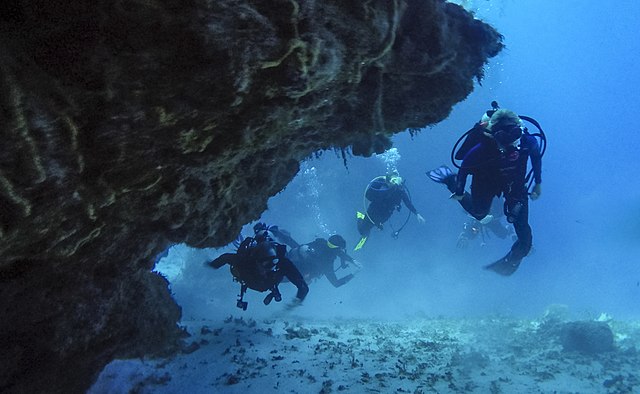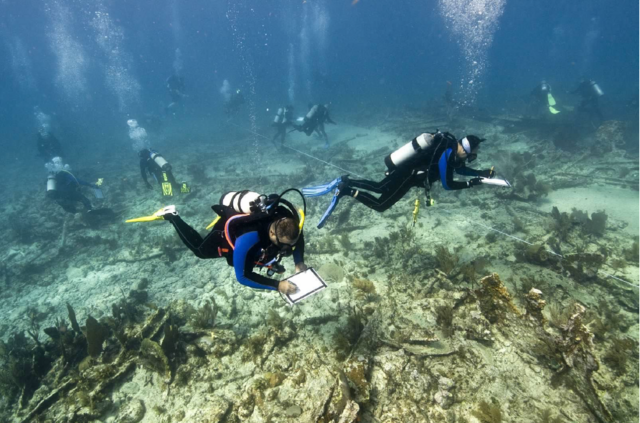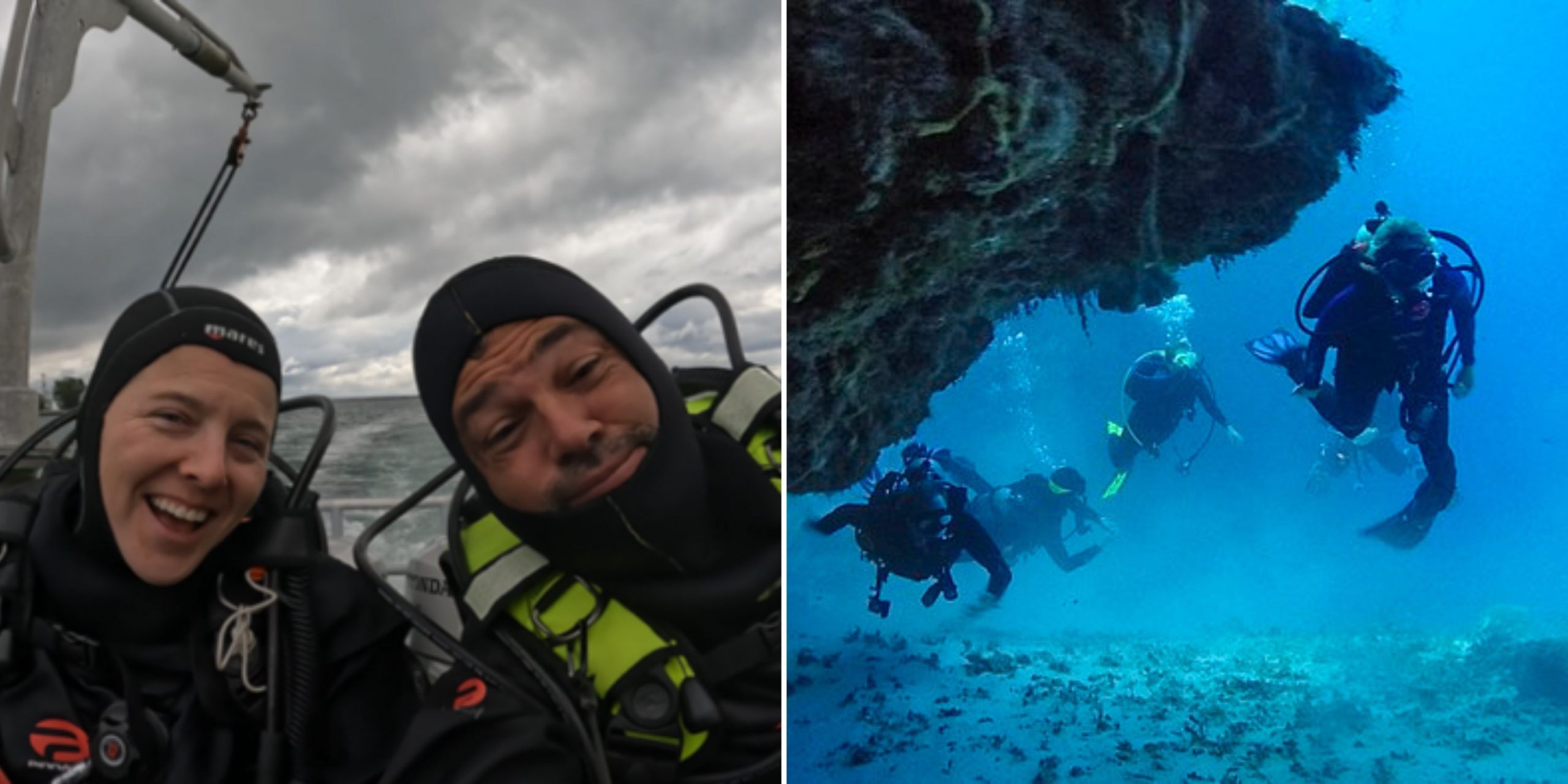Picture this: 60 miles off the coast of Belize, right in the middle of the Caribbean Sea, there’s a massive, perfect circle in the ocean that’s so blue it looks fake.
That’s the Great Blue Hole, a 400-foot-deep sinkhole that has fascinated divers, scientists, and curious billionaires for decades. It’s beautiful, eerie, and a little bit terrifying, like the ocean’s version of a trapdoor.
For most of us, it’s a “maybe-one-day” dive on the bucket list. For the few who’ve actually been down there, it feels like venturing onto another planet. When an expedition team that included Richard Branson and Fabien Cousteau (yes, the grandson of that Cousteau) took a submarine down in 2018, they weren’t expecting what they’d find at the bottom.
The ocean, as it turns out, has a way of mixing wonder with a healthy dose of “oh no.”
A Hole with a History
Long before it became an Instagram hotspot, the Blue Hole was a dry cave system. Back during the last Ice Age, sea levels were hundreds of feet lower, and this whole area was solid limestone. Over thousands of years, water carved out tunnels and stalactites. Then the ice melted, the seas rose, and the ceiling caved in. The result was a perfectly circular ocean pit that now looks like the world’s most dramatic swimming pool.

When divers descend, they can actually see the layers of rock changing color. It’s a geological time capsule that whispers, “Once upon a time, this was dry land.” Which is both mind-blowing and mildly unsettling when you remember you’re hundreds of feet underwater.
The 2018 Expedition
So what did Branson and his crew find when they finally reached the bottom? It wasn’t Atlantis, but it was still quite a sight. Around 300 feet down, the water suddenly turned into a thick, greenish haze. This layer of hydrogen sulphide separates the living world from the lifeless one. Below that, nothing survives. No fish, no coral, no light. Just silence and the occasional ghostly shell of some unlucky crab that took a wrong turn and never made it back.
Then came the grim discovery. The team spotted the remains of two divers who had gone missing years before. Out of respect, and given how dangerous the environment was, they chose not to recover the bodies. It was a sobering reminder that this is not your average tropical dive spot.

And to top it all off, there it was: a plastic bottle sitting proudly at the bottom of one of Earth’s most remote places. Apparently, even the ocean’s deepest abyss isn’t safe from humanity’s bad habits. As Branson himself said, “We saw plastic bottles at the bottom of the hole, a real scourge of the ocean.” Translation: even billionaires can’t escape the trash problem.
What It All Means
The Great Blue Hole isn’t just a dive site. It’s a slice of Earth’s ancient story. The stalactites tell us how far sea levels have risen. The chemical layers show how ecosystems change when oxygen disappears. And the random bits of human junk tell us exactly how far our reach extends, which is depressingly far.
For divers, the experience is unforgettable. Not for its coral (there isn’t much past a certain depth) but for the sheer strangeness of descending into an endless blue void. It’s quiet, otherworldly, and a reminder that nature has a sense of scale we can barely wrap our heads around.

The Final Word
The Blue Hole is beautiful, but it’s also haunting. It’s part natural wonder and part cautionary tale. You get the feeling that the ocean is showing us both its past and our future. A collapsed cave that became a window into time, now marked by the unmistakable signature of human presence: plastic.
If you ever find yourself diving there, remember this: you’re not just exploring a hole in the ocean. You’re swimming through a piece of Earth’s memory, one that’s equal parts magnificent and melancholy, with a dash of “please, for the love of the planet, don’t drop your water bottle.”

